How to Draw Plan View Flag
Complete Guide to Blueprint Symbols: Floor Plan Symbols, MEP Symbols, RCP Symbols, and More than
Jul 03, 2020
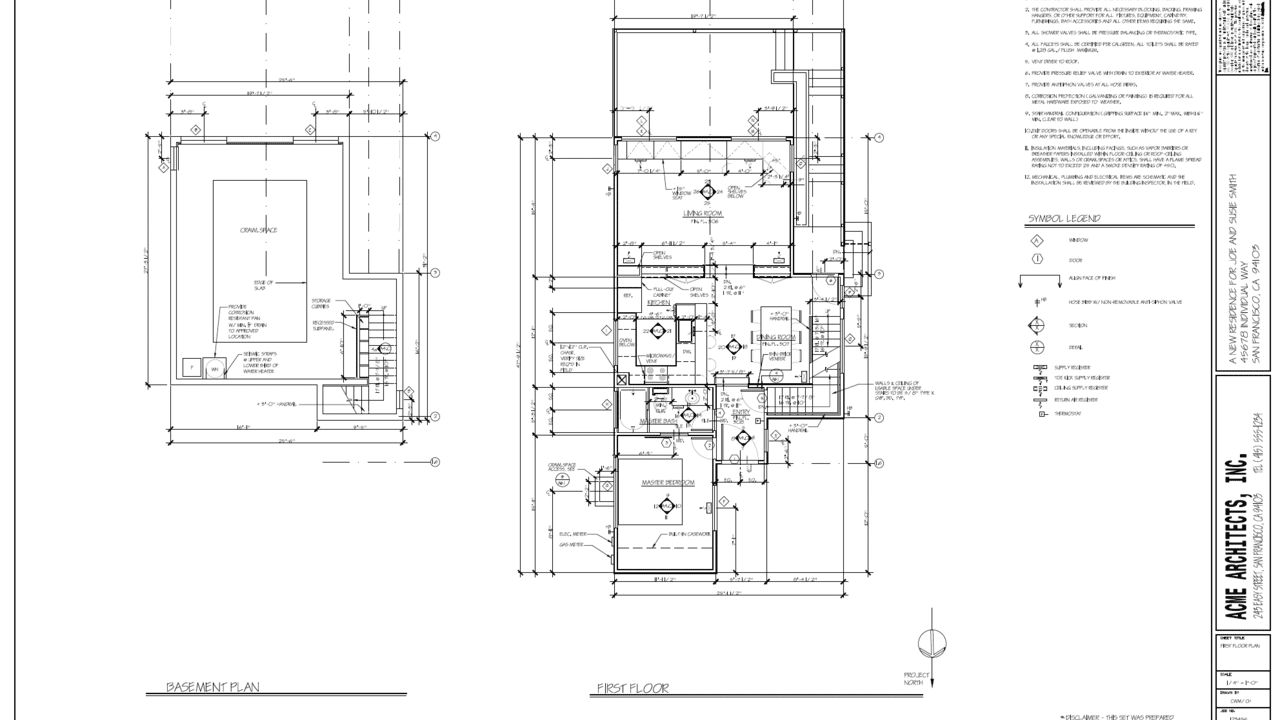
An architectural programme, or set of blueprints , is created by architects, engineers, and designers to lay out all the construction specifications of a house, such as dimensions, building materials, installation methods, techniques, and even the order in which these things must be accomplished.
The number of details that must be included in a complete set of blueprints is then large that architects reduce the data on the drawings to a set of standardized symbols and abbreviations in order to brand the cartoon easier to read and less cluttered.
For reference, every ready of architectural drawings includes a symbol legend. If you aren't familiar with a symbol, yous volition be able to find it in the legend. Floor plan notes give additional context for the building. For instance, the notes can clarify exactly to what betoken on a wall dimensions should be measured.
Most plans include symbols that are a combination of:
- Appearance (for case, a bathtub looks like a bathtub)
- Conventions (double lines are usually used to denote walls)
- Labels (for instance, a thermostat is labeled "T").

Architectural symbols and scale
In order to fit all the data about a layer of a building onto a page, construction drawings and architectural drawings are drawn so that a minor increment of measurement represents a larger increase. This ways that the plans are drawn "to scale." Every symbol on the legend is drawn to the same scale as the rest of the floor plan.
Scales vary in complexity, from the uncomplicated (1 inch = one foot) to the circuitous (3/xvi inch = 1 foot). Plans are often drawn at three/4, 3/sixteen, 1/8, and other scales (in each case the dimension in inches here corresponds to one foot). The symbols are also fatigued to scale and so you lot volition go an authentic idea of how elements of a room are configured in the space.
The scale is always shown on the same page every bit the cartoon, either under the title or below an individual drawing. Keep in mind that scales can vary throughout a prepare of architectural prints, so bank check each folio and use an architectural scale , or scaled ruler, to make certain you're reading the print accurately.
Recognizing symbols is a first step towards reading a property'due south blueprints. Learn everything you need to know about reading blueprints in MT Copeland's online class , taught by professional builder and craftsman Jordan Smith.
half-dozen Mutual types of floor program symbols
Imagine a view of a home sliced horizontally most five feet from the ground and looking downwardly from above. This is the fashion a floor plan is drawn, and it is designed to give you a detailed idea of the layout of each floor of the house. This is just i of the components of the consummate ready of blueprints.
The types of plan symbols y'all'll find on flooring plans include everything from doors and stairs to appliances, article of furniture, and electrical symbols.
Here are the six nigh mutual types of symbols you will find on floor plans (versus other types of plans).

ane. Compass
The north arrow tells you about the orientation of the holding. Builders and architects use "Project N" as a designation, which is different from the key directions on a compass. This allows you lot to navigate through the house by using n, south, eastward, and west without having to know where due (magnetic) n is.
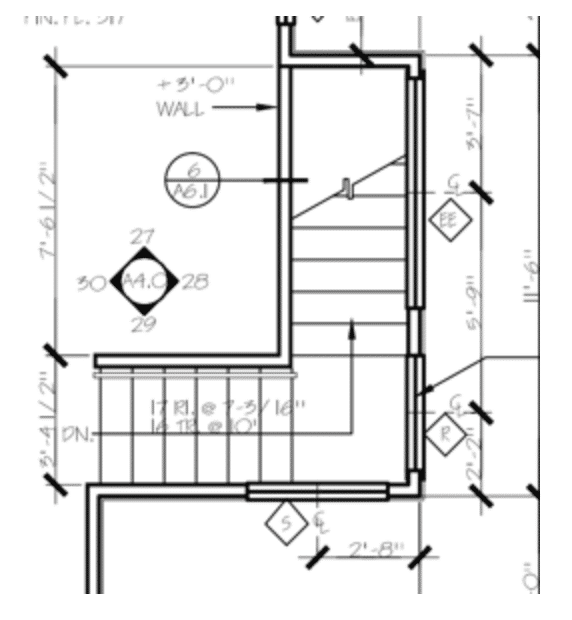
two. Stairs
Stairs are customarily indicated by parallel lines with their measurements. In this example, we encounter that they are placed betwixt a window (the triple line indicated by a diamond), and an interior architectural wall (the double line).

3. Doors
Doors, indicated in this plan with a numbered hexagon symbol, are drawn with a straight line indicating the door itself; the curved line shows which way the door swings open, to show architects and designers the amount of clearance they will have in the room.
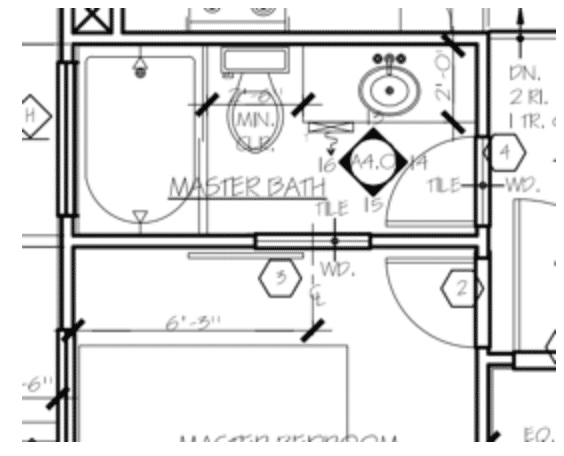
4. Windows
A window is usually denoted with three lines, vs. a wall's 2 parallel lines. It is as well indicated with a numbered diamond, which shows which window information technology is on the window schedule. As you look at symbols such every bit the diamond for window, look for important abbreviations that depict it, such equally EQ, or "equal." This will help you empathise the dimensions of what the symbols are describing. For instance, a C with an L through it is a center line, and describes that a window is centered, with equal distance on either side.
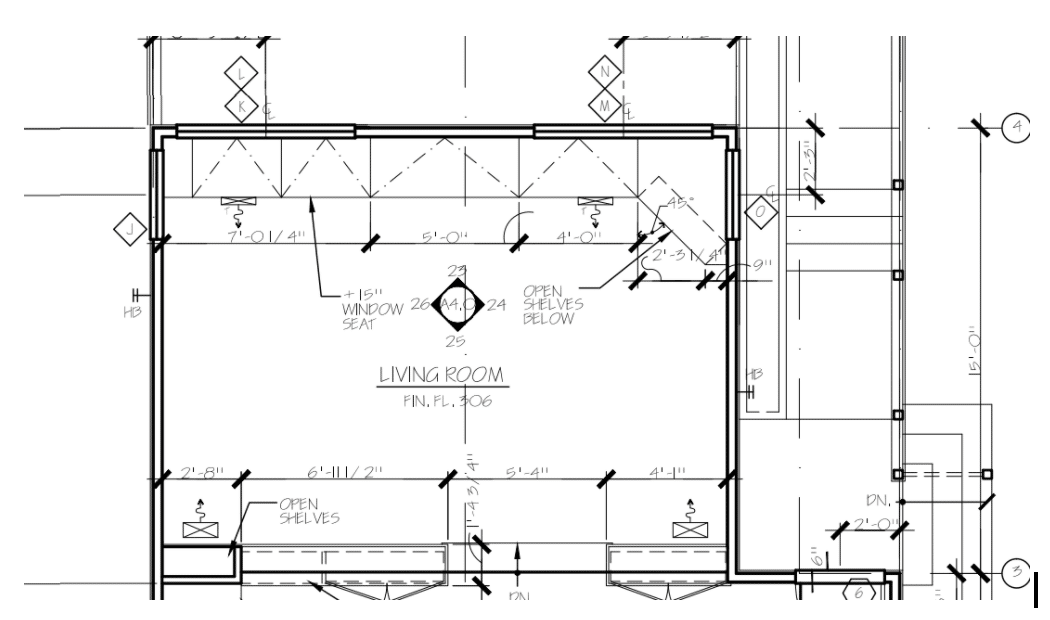
five. Walls
Walls are usually indicated with a single line for interior lines, and are drawn with thick, nighttime line weights, unremarkably in double lines, to indicate exterior walls. As you can meet on this plan, the architect has also given the length for each wall.
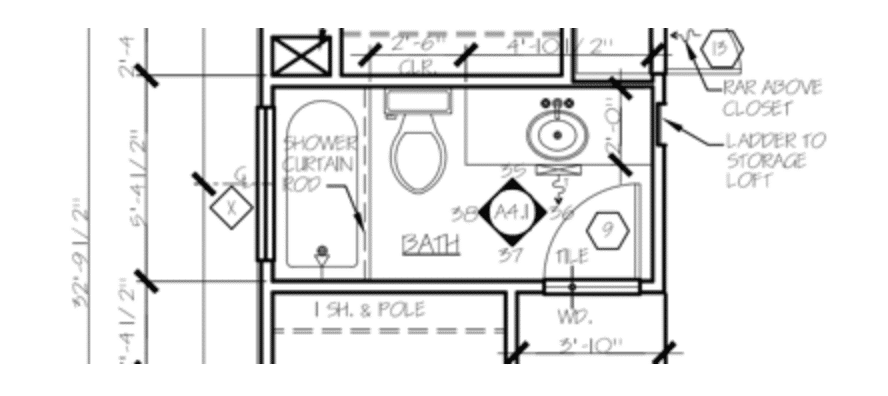
6. Appliances
Appliances and fixtures, such as toilets, sinks, and bathtubs, are drawn to calibration with a thin line, and resemble the detail they symbolize. Similarly, the furniture in floor plans is drawn with a calorie-free line weight and so you tin can quickly tell that information technology is non integral to the building. It'due south placed in that location for reference then that anyone looking at the floor plan can understand how the rooms were intended to be set upwardly.
Appliances and fixtures such equally cabinets and the microwave are frequently drawn with a dotted line. The most pertinent information, such as walls, doors, and windows, are drawn in heavier weights, so your optics will be drawn to them immediately.
Symbols found on other prints in an architectural package
Each of the components of the architectural plan volition have its own ready of symbols and notes. Architects and designers work with the flooring plans, and you'll also see exterior and interior elevations, and reflected ceiling plan (RCP) . Hither are the well-nigh common found on each blazon of print .
MEP (Mechanical, Electrical, and Plumbing)
Other types of prints within the architectural program include MEP, or Mechanical, Electric, and Plumbing. They are commonly delivered in a packet on a divide cartoon with the relevant mechanical, plumbing symbols, and electric symbols. As a architect or framer, you'll demand to know where those systems volition be routed and so you can go out infinite for them to be laid in. The MEP drawings will show the location of physical fixtures and the routing of the lines.
Plumbing drawings reverberate the complex pipage and sewage routes for the building, and these are examples of symbols you volition find on the plumbing plans:
Mechanical drawings reflect the heating, ventilation, and air conditioning (or HVAC) systems of a building. Here are some of the symbols y'all will see on mechanical plans:
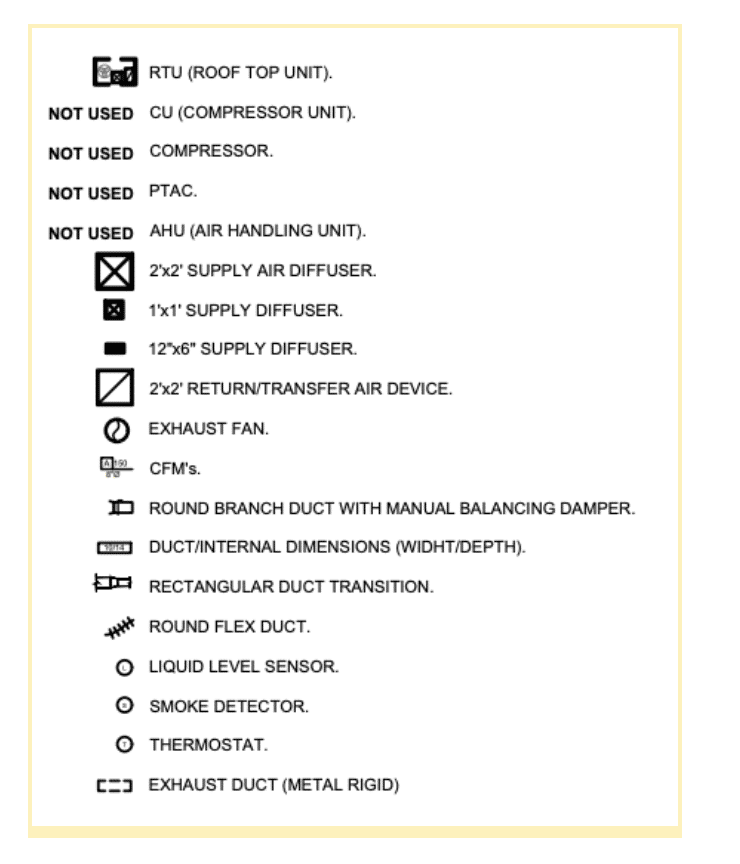
RCP (Reflected Ceiling Program)
Architects and builders draw reflected ceiling plans (RCP) to show the dimensions, materials, and other fundamental information nearly the ceiling of each of the rooms represented on the blueprint. It takes its proper name from the idea that you are looking down at the ceiling as though there were a mirror on the flooring reflecting the ceiling's plan back to you. Hither are mutual RCP symbols:
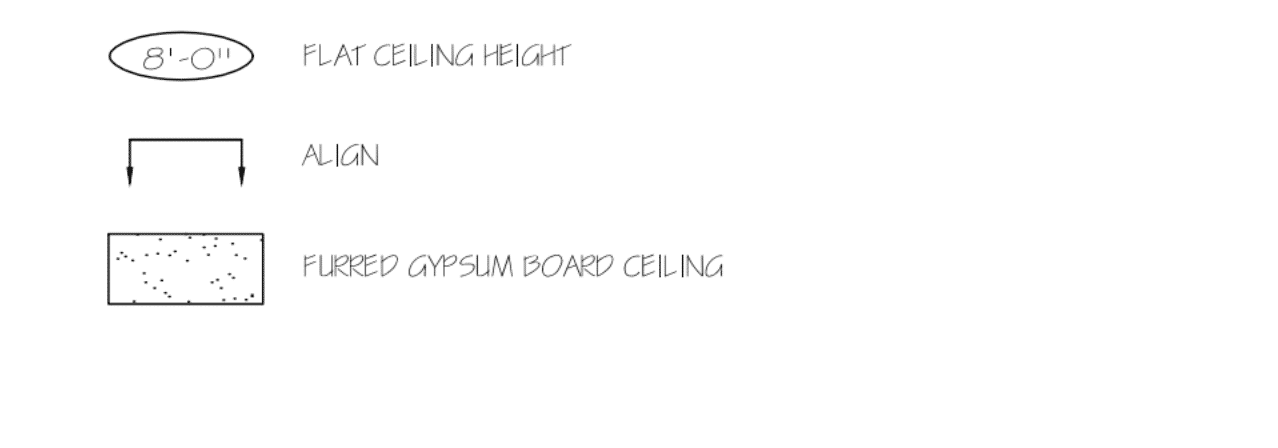
MT Copeland offers video-based online classes that requite yous a foundation in construction fundamentals with real-world applications. Classes include professionally produced videos taught by practicing craftspeople, and supplementary downloads similar quizzes, blueprints, and other materials to help you master the skills.
Source: https://mtcopeland.com/blog/complete-guide-to-blueprint-symbols-floor-plan-symbols-mep-symbols-rcp-symbols-and-more/
Post a Comment for "How to Draw Plan View Flag"